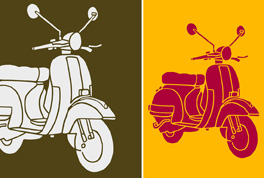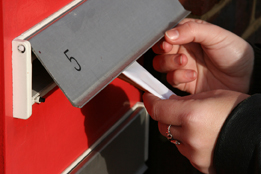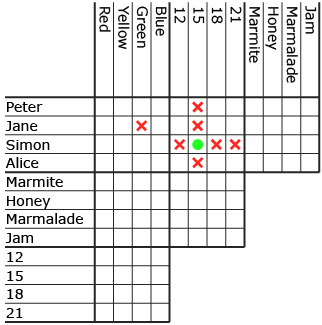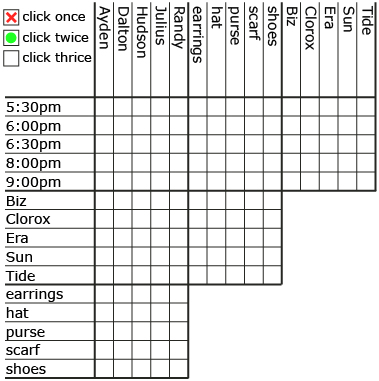Lesson 5
| Site: | MoodleHUB.ca 🍁 |
| Course: | Math 20-1 SS |
| Book: | Lesson 5 |
| Printed by: | Guest user |
| Date: | Thursday, 4 December 2025, 2:08 AM |
Description
Created by IMSreader
1. Lesson 5
Module 6: Rational Expressions
Lesson 5: Applications of Rational Equations
Focus

© NLshop/8267914/Fotolia
It’s Super Race Day! Two-person teams will compete to win different events and the right to be crowned Super Race Champions. Fathers and sons, mothers and daughter, siblings, and best friends compete in events such as Scooter Rendezvous, Flyer Scramble, Mixture Madness, and Canoe Races.
In the last lesson you learned how to solve rational equations. In this lesson you will learn how to use rational equations to solve practical problems. These problems will centre on the events of Super Race Day.
Outcomes
At the end of this lesson you will be able to
- solve problems by modelling a situation using a rational equation
Lesson Questions
You will investigate the following questions:
- What types of problems related to co-operative and competitive games can be solved by rational equations?
- How can real-world problems be modelled with rational expressions and rational equations?
Assessment
Your assessment may be based on a combination of the following tasks:
- completion of the Lesson 5 Assignment (Download the Lesson 5 Assignment and save it in your course folder now.)
- course folder submissions from Try This and Share activities
- additions to Module 6 Glossary Terms and Formula Sheet
- work under Project Connection
1.1. Launch
Module 6: Rational Expressions
Launch
Do you have the background knowledge and skills you need to complete this lesson successfully? This section, which includes Are You Ready? and Refresher, will help you find out.
Before beginning this lesson you should be able to
- evaluate distance, speed, and time problems
- solve rational equations
1.2. Are You Ready?
Module 6: Rational Expressions
Are You Ready?
Complete the following questions. If you experience difficulty and need help, visit Refresher or contact your teacher.
- The distance (d) that has been travelled at speed s over time t is given by d = st. Use this relation to evaluate the following scenarios.
- Simplify the following expressions.
How did the questions go? If you feel comfortable with the concepts covered in the questions, skip forward to Discover. If you experienced difficulties, use the resources in Refresher to review these important concepts before continuing through the lesson.
1.3. Refresher
Module 6: Rational Expressions
Refresher
Practise evaluating distance, speed, and time problems at Distance—Time Graphs, and Distance-Time Velocity-Time Graphs.
Work through Rational Equations to refresh your memory on how to solve and work with rational equations.
Go back to the Are You Ready section and try the questions again. If you are still having difficulty, contact your teacher.
1.4. Discover
Module 6: Rational Expressions
Discover

iStockphoto/Thinkstock
One of the first events at Super Race Day is Scooter Rendezvous. Scooters have long represented a fun and economical way of travelling. Not all scooters are built the same. Some scooters have larger engines, others have more storage room, and all have unique designs.
In Scooter Rendezvous team members start at opposite ends of a 50-km stretch of highway. Each team member drives toward the other. The event is completed when the scooters meet. The time it takes each team to complete the event is recorded. Winners are declared based on the fastest times.
Try This 1
Karim and Chandelle participated in Scooter Rendezvous. Karim drove the Vespa LX 50 at an average speed of 60 km/h. Chandelle drove the Honda Big Ruckus at an average speed of 90 km/h.
- Place the information from the question into the following chart. Where a quantity is unknown, use a variable or expression.
Distance (km) Speed (km/h) Karim Chandelle 
- What do you know about the time it took for Karim to arrive at the rendezvous compared to the time it took for Chandelle to arrive at the rendezvous?
- Use a strategy of your choice to determine the distance travelled by each driver. Ask yourself these questions if you get stuck:
- What strategy can I use?

- What is another strategy that I can use?

- What is a third strategy that I can use?

- What is a hint about the answer?

- What strategy can I use?
![]() Save your work in your course folder.
Save your work in your course folder.
You will revisit these results later in the lesson.
1.5. Explore
Module 6: Rational Expressions
Explore

mopper: Pixland/Thinkstock; winter: Photos.com/Thinkstock; chasing car: Hemera/Thinkstock
Consider the following types of problems:
- If you could shovel your driveway in 30 min and your friend could do the same job in 25 min, how long would it take both of you to do the job together?
- How much time do you actually save on a 60-km drive if you drive 15 km/h over the speed limit?
- What amount of floor cleaner do you have to add to a bucket containing 10 L of water to create a solution that is 5% floor cleaner?
These types of problems can be solved using rational equations. In fact, rational equations can be used to model and solve many problems related to work, motion, and proportions.
This lesson is divided into three sections. Each section will focus on a particular type of word problem related to work, motion, or proportions.
1.6. Explore 2
Module 6: Rational Expressions
Time and Distance Problems
Solving a word problem can be challenging, but doing so does not have to be difficult. Careful reading, proper planning, and a good understanding of mathematics are keys to success in modelling and solving word problems.
Scooter Rendezvous
Retrieve your results from Try This 1. In Try This 1 you had to determine the distance travelled by each scooter. You organized your information in a table. Compare your table with the one below.
| Distance | Speed | |
| Karim | d | 60 |
| Chandelle | 50 − d | 90 |
You can use the organized information to determine an expression for the time taken by each person to complete his or her portion of the event.
Recall that time is equal to the ratio of the distance travelled divided by the speed, or ![]() The expressions for the time taken by Karim and Chandelle to complete the event are shown in the table.
The expressions for the time taken by Karim and Chandelle to complete the event are shown in the table.
| Distance | Speed | Time | |
| Karim | d | 60 | |
| Chandelle | 50 − d | 90 |
Look at your answer to Try This 1 question 2. Did you indicate that the travel times for Karim and Chandelle are equal?
Since Karim and Chandelle start and stop driving at the same time (when the scooters meet), their time travelled should be identical. In other words,
Karim’s time = Chandelle’s time
Substitute time values from the table to get
![]()
Try This 2
- Solve the equation
 for d. What distance did each person travel when they met at the rendezvous?
for d. What distance did each person travel when they met at the rendezvous?
- Compare your answers to those you determined in Try This 1 question 3. Account for any discrepancies.
- How much time did it take for Karim and Chandelle to complete the event?
![]() Save your work in your course folder.
Save your work in your course folder.
When it comes time to complete the Lesson 5 Assignment, you might want to refer to the method used here.
Turn to “Example 4” on page 346 in the textbook. Work through the solution to see how a table similar to the one you used in Try This 1 can be used to organize the information when the rate, or speed, is required. As you work through the solution, respond to the questions in Self-Check 1 to check your understanding.
Self-Check 1
Respond to the questions in Solving Problems with Rational Equations Self-Check.
1.7. Explore 3
Module 6: Rational Expressions
Flyer Scramble

© arvydas666/6006762/Fotolia
Another event at Super Race Day is the Flyer Scramble. Flyers are a great way to let people know about community events, new businesses, and missing pets.
In this event team members must deliver flyers to 73 homes. Flyers must be placed inside mailboxes and runners must only use walkways. Each team member completes the challenge and is timed. The results are used to calculate the time it would take to complete the route by both team members working simultaneously.
Each team member then runs through the route to attempt to beat the calculated time. The winning team is the team with the fastest actual recorded or calculated time.
Try This 3
Mitchel and Tia are members of a team participating in the Flyer Scramble event. Mitchel can deliver the flyers in 40 min. Tia covers the same route in 50 min. Answer the following questions to determine how long it would take Mitchel and Tia to deliver the flyers if they work together.
- What fraction of the flyers could Mitchel deliver in 20 min, 10 min, and 1 min?
- What fraction of the flyers could Mitchel deliver in t min? How did you determine this?
- Complete the following table. The first row has been done for you. Compare your answers to questions 1 and 2 to the expressions in the first row of the table.
Time to Deliver Flyers Fraction of Work Done in 1 min Fraction of Work Done in t min Mitchel Alone 40 

Tia Alone 50 Mitchel and Tia Together t
![]() Save your work in your course folder.
Save your work in your course folder.
Share 1
- Compare your answers to Try This 3 with a classmate. Discuss the reasoning behind each expression in the table.
- Use the expressions in the last column of the table to construct an equation that could be used to determine the number of minutes it would take for Mitchel and Tia to deliver the flyers together.
- Solve the equation to determine the time that Mitchel and Tia would have to beat in order to improve their score.
![]() Save your work in your course folder.
Save your work in your course folder.
Turn to page 345 of the textbook. Compare your results from Try This 3 and Share 1 to the solution shown for “Example 3.” You will notice that the problem presented in this example uses the same numbers as the exercises you just completed in this lesson. As you read through the example, be sure to do the following:
- compare the information in the tables
- compare the equations that are used to solve the problem
- study how the solution is verified
Self-Check 2
Complete question 17 on page 350 and questions 12 and 13 on page 349 of the textbook. Answer
1.8. Explore 4
Module 6: Rational Expressions
Mixture Madness

iStockphoto/Thinkstock
The third event at Super Race Day is Mixture Madness. Mixing items of two different concentrations can help create the perfect blend to suit your needs, whether you need motor oil and gasoline, trail mix, or ketchup and mustard.
In Mixture Madness team members combine ingredients to prepare mixtures containing a predetermined proportion of a specified ingredient. Contestants use tools to measure the mass and volume of the ingredients. Points are deducted according to the discrepancy between the obtained measure and the target measure. The winning team is the team with the fewest deductions.
Try This 4
- Launch Bleach Solution to experiment with different mixtures of concentrated bleach and water. Move the bleach slider to input a volume of bleach that is less than 10 L. Use the water slider to input a volume of water that is less than 100 L. The percentage solution that is created is shown above the container.
Can you determine the rational expression that is used to compute the percentage concentration of the solution?
- Consider how much bleach should be added to 50 L of water in order to make a solution that is 10% bleach?
- Write a rational equation that can be used to solve the problem. Use the hints provided if you need help.



- Solve the equation.
- Use Bleach Solution to confirm your answer to 2b.
- Write a rational equation that can be used to solve the problem. Use the hints provided if you need help.
![]() Save your work in your course folder.
Save your work in your course folder.
Share 2
Compare your solutions to Try This 4 with those of a classmate. Discuss the other strategies you have used or could use to solve mixture problems. Make any necessary revisions to your own work. If your classmate has a different strategy, copy his or her work into your own folder so that you will have an alternate solution to study.
![]() Save your work in your course folder.
Save your work in your course folder.
Self-Check 3
1.9. Connect
Module 6: Rational Expressions
Connect
Lesson 5 Assignment
Open your copy of Lesson 5 Assignment, which you saved in your course folder at the start of this lesson. Complete the assignment.
![]() Save your work in your course folder.
Save your work in your course folder.
Project Connection
Go to Module 3 Project: Game Challenge. Complete Step 5.
![]() Save your work in your course folder.
Save your work in your course folder.
Going Beyond

c Salix Alba; Used under Creative Commons Licence 3.0- Share, Adapt, Attribution
In this lesson you used tables to organize the information presented in a situation. Tables help you keep track of how pieces of information are related to one another. Logic grids can also manage large amounts of information.
The Law School Admission Test (LSAT) is a standardized exam that measures the aptitude of law-school applicants. In addition to reading comprehension and writing, the exam has an analytical reasoning section in which students solve logic problems. This section checks the ability to synthesize information, construct sound arguments, and draw logical conclusions.
Do you think you are ready for law school? Try to solve the next puzzle. You can also find this puzzle and others like it on the Internet.
Question: What time is each person's reservation, what did each person purchase, and what laundry product does each person use?

c Salix Alba; Used under Creative Commons Licence 3.0- Share, Adapt, Attribution
Clues
- The person who uses Sun didn’t buy the shoes.
- The five people were the person who bought the scarf, the person with a reservation at 9:00 pm, Ayden, the person who uses Era, and the person who bought the shoes.
- Either the person who uses Clorox or the person who uses Era is Hudson.
- The person who uses Tide has a later reservation than Dalton.
- Of the person who uses Era and Randy, one has the 6:00 pm reservation and the other bought the earrings.
- Ayden has an earlier reservation than the person who uses Era.
- The person with a reservation at 6:30 pm is not Hudson.
- Dalton has a later reservation than the person who uses Biz.
- The person with a reservation at 6:00 pm is Julius.
- The person with a reservation at 5:30 pm bought the purse.
Search the Internet for other logic grid puzzles. Who knows? Maybe you will find yourself breezing through this section on the LSAT one day!
1.10. Lesson 5 Summary
Module 6: Rational Expressions
Lesson 5 Summary

Stockbyte/Thinkstock
In this lesson you investigated the following questions:
- What types of problems related to cooperative and competitive games can be solved by rational equations?
- How can real-world problems be modelled with rational expressions and rational equations?
You explored three different types of problems that can be solved using rational equations. You considered problems relating to motion, work, and proportions.
You saw how these types of problems are related to games in which members of each team compete against the clock to complete different events. You learned how to mathematically determine distance, speed, time, and proportion.
A key strategy in modeling these problems was to organize the important information. You learned how to use tables to keep track of the critical points of a situation. You then used the information to construct rational equations that could be solved for the desired quantity. Constructing equations was often based on known formulas.
You have now completed your study of rational expressions and equations. As you continue in your studies, you can be sure that you will encounter these concepts again. Remember that mathematics is a subject that continues to build on itself—what you have seen once before may be seen and applied again.




